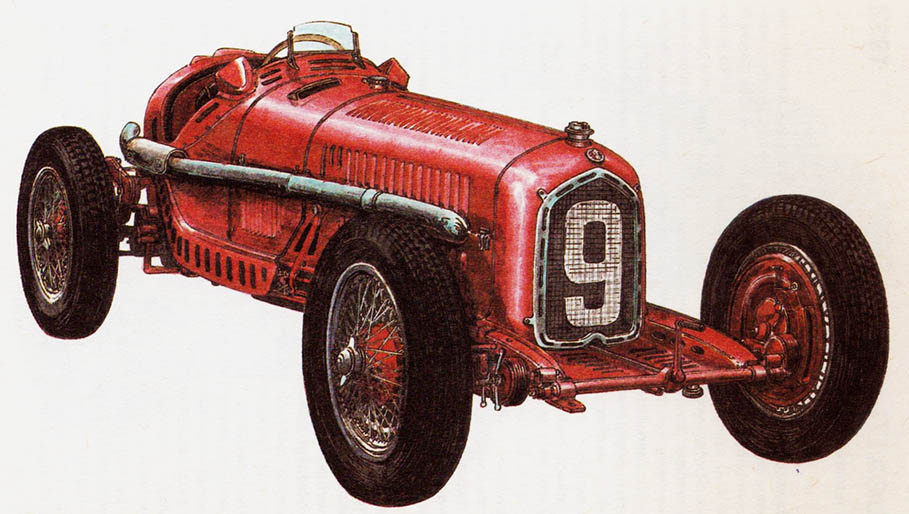ALFA ROMEO P3 – year 1932
SA Alfa Romeo, Milano, Italy.
The ever-increasing engine power of Maserati cars, Bugatti and Mercedes encouraged Alfa Romeo to start experimenting. The monoposto chassis is equipped with two six-cylinder engines located next to each other. However, despite achieving high total power equal to 147,2 kW (200 KM), the car was too heavy and there were not enough tires for it during the races.

SA Alfa Romeo, Milano, Italy.
W 1932 year of Eng. Vittorio Jano constructed a new car marked with the symbol P3. It was equipped with an in-line eight-cylinder engine with a cylinder diameter 65 mm and piston stroke 100 mm, thanks to which it reached the displacement 2654 cm3. Engine, divided into two blocks of four cylinders with two overhead camshafts, was gaining power 139,8 kW (190 KM) by 5400 RPM. Each cylinder block was powered by a separate Roots overpressure compressor 60 kPa. The compressors are placed between the Weber type carburettors and the suction hoses. Valves, arranged at an angle of 100 °, they were tightened by three concentric springs. The crankshaft rotated in plain bearings. The drive from the engine was transmitted through a two-disc clutch, a four-speed gearbox and a differential with two drive shafts arranged in two sheaths towards the rear axle. It's worth adding, that the torque was transmitted to the rear axle by bevel gears located at the joints at the ends of the shafts. The rigid bridge, together with the gearbox of the wheel drive and the sheaths, formed a triangular system, arranged pivotally at the exit from the gearbox. The bridge was suspended on longitudinal ones, semi-elliptical leaf springs. There were a pair of friction rod dampers above each spring, facing each other. The drive forces were transmitted via sheaths of the drive shafts. The stiff front axle had longitudinal leaf springs, two friction dampers and a control trapezoid. Mechanical brakes acted on all wheels. The Alfa Romeo P3 was basically the first European monopoly with a centrally located driver. The empty car was heavy 770 kg. The maximum speed varied from 225 do 232 km / h depending on the application of the engine boost, reaching with hypertension 80 kPa power 158,2 kW (215 KM).
In years 1932 i 1933 Alfa Romeo cars have won six of the eight major Grand Prix races, becoming the best racing cars of the time.